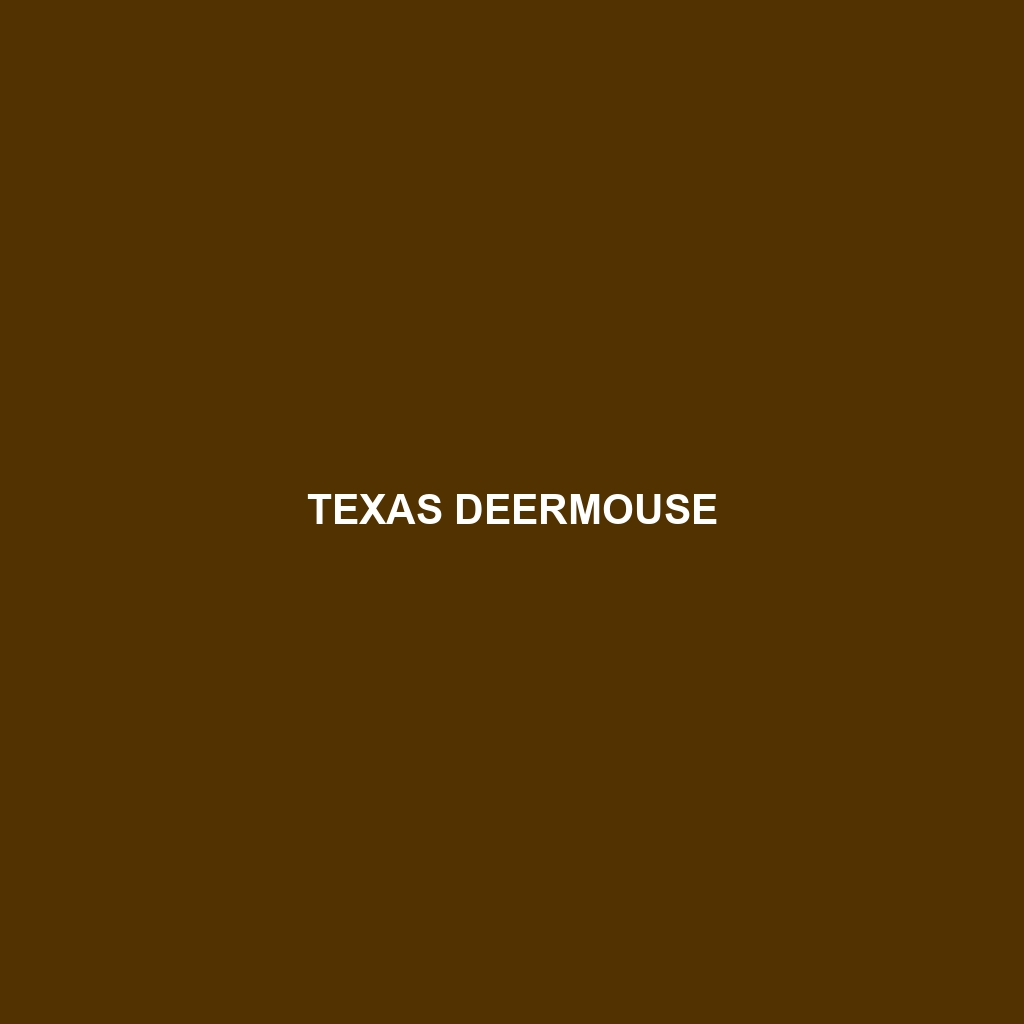Cerralvo Island Deermouse
Common Name: Cerralvo Island Deermouse
Scientific Name: Peromyscus maniculatus
Habitat: The Cerralvo Island Deermouse is primarily found on Cerralvo Island, located in the Gulf of California in Mexico. This species thrives in a variety of habitats, including arid scrublands, coastal dune ecosystems, and rocky areas. The presence of dense vegetation alongside sandy soils provides an ideal environment for shelter and foraging.
Physical Characteristics: The Cerralvo Island Deermouse is a small rodent, typically measuring about 8 to 10 inches in total length, including the tail. Its fur is usually a tawny or grayish color, which offers effective camouflage against its natural surroundings. Notable features include large, rounded ears and a long, slender body, allowing it to navigate through its habitat efficiently. Its tail is approximately the same length as its body, aiding in balance and agility.
Behavior: The Cerralvo Island Deermouse exhibits nocturnal behavior, becoming active at night to forage for food. They are known for their agility and speed, which they utilize to escape from predators. Socially, they are often solitary or live in small family groups. Nesting occurs in burrows or within dense vegetation, providing protection against environmental elements and predators.
Diet: The diet of the Cerralvo Island Deermouse consists mainly of seeds, nuts, fruits, and insects. This omnivorous feeding habit allows the species to adapt to various environmental conditions. During foraging, they play a significant role in seed dispersal, aiding in plant population dynamics within their habitat.
Reproduction: The breeding season for the Cerralvo Island Deermouse typically occurs from spring to early autumn, with females capable of producing multiple litters each year. Each litter can contain 2 to 5 young, which are born blind and hairless, gradually developing the ability to survive independently within several weeks.
Conservation Status: The Cerralvo Island Deermouse is currently classified as vulnerable due to habitat loss and environmental changes affecting Cerralvo Island. Preservation of its natural habitat is crucial for maintaining the population of this unique rodent.
Interesting Facts: One fascinating aspect of the Cerralvo Island Deermouse is its adaptability to isolated environments, showcasing an evolutionary trait that enables it to thrive in limited geographic areas. Research indicates that these mice may exhibit unique behavioral patterns compared to mainland relatives, making them a subject of interest for ecologists and conservationists alike.
Role in Ecosystem: The Cerralvo Island Deermouse plays a vital role in its ecosystem as both a seed disperser and a prey species for various predators. Its activities contribute to the health and sustainability of local flora and fauna, making it an important component of the ecological balance in the habitats it occupies.
